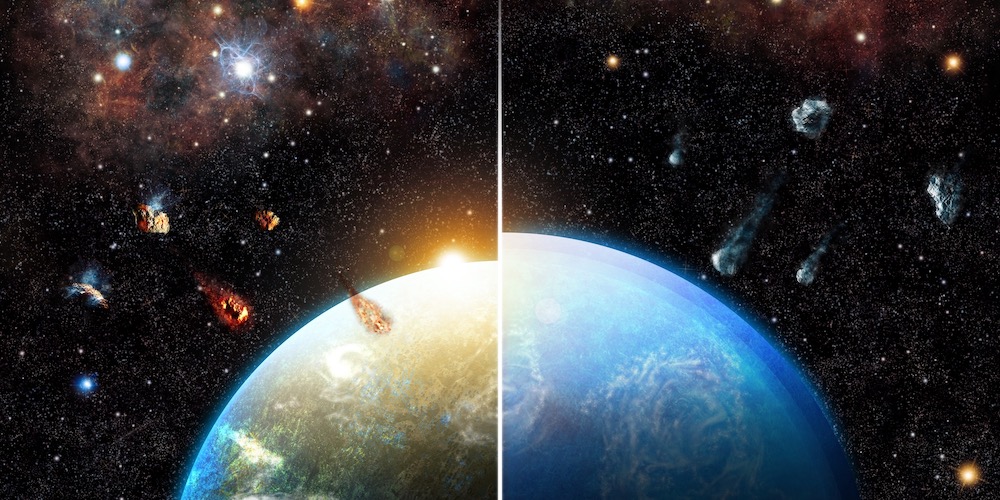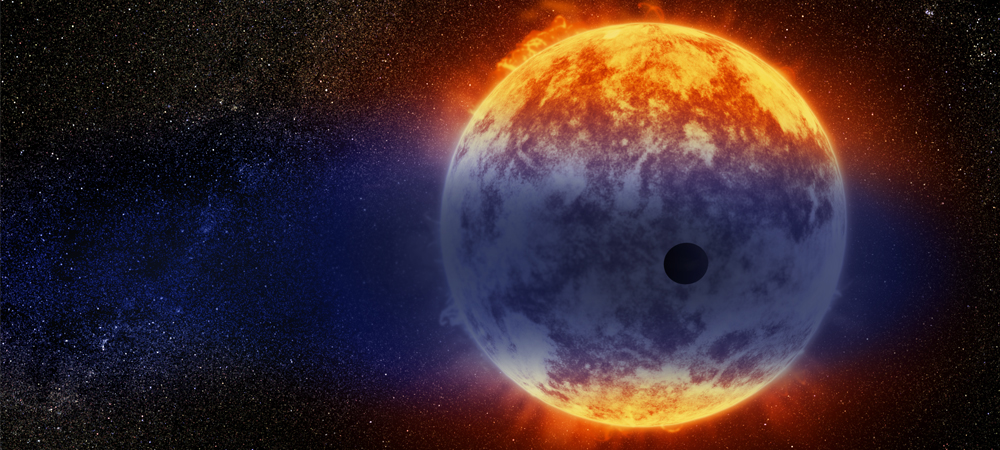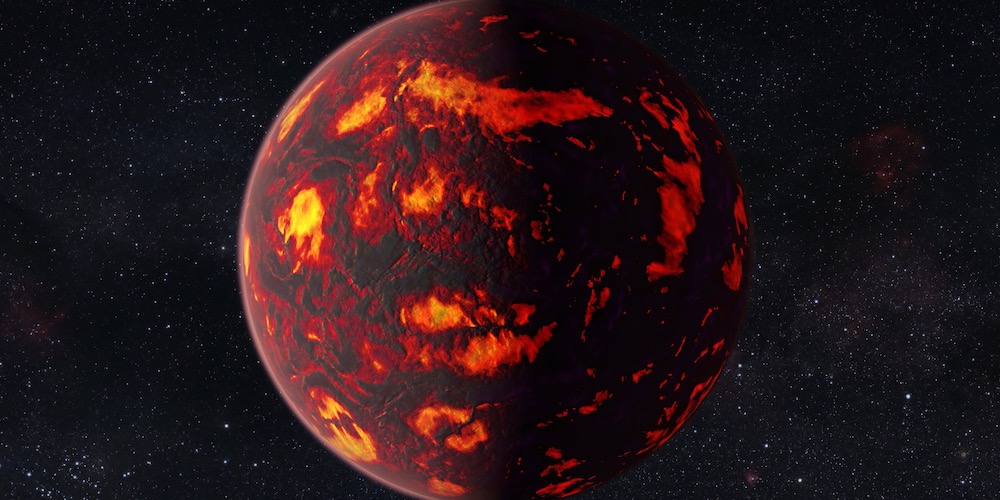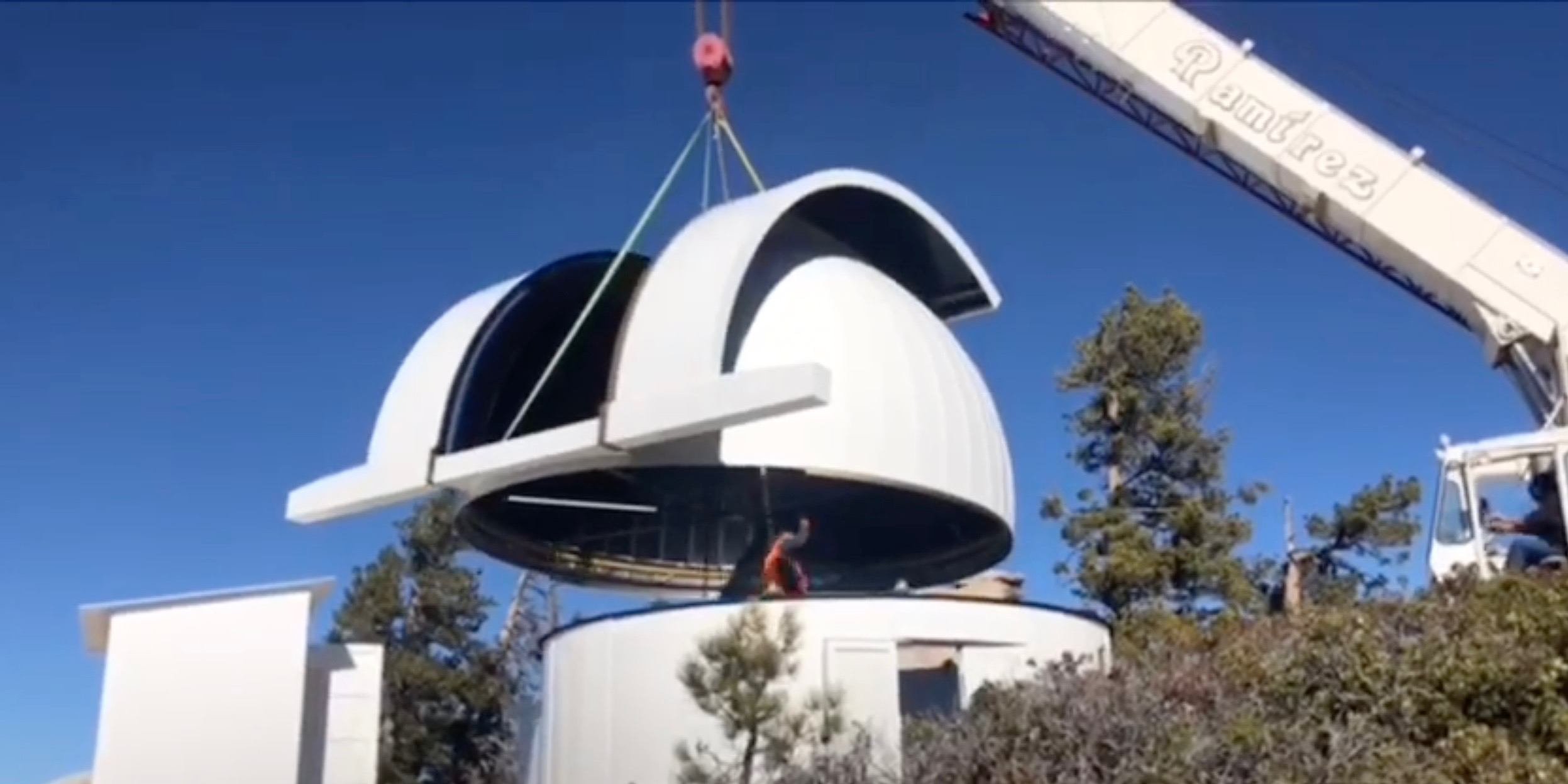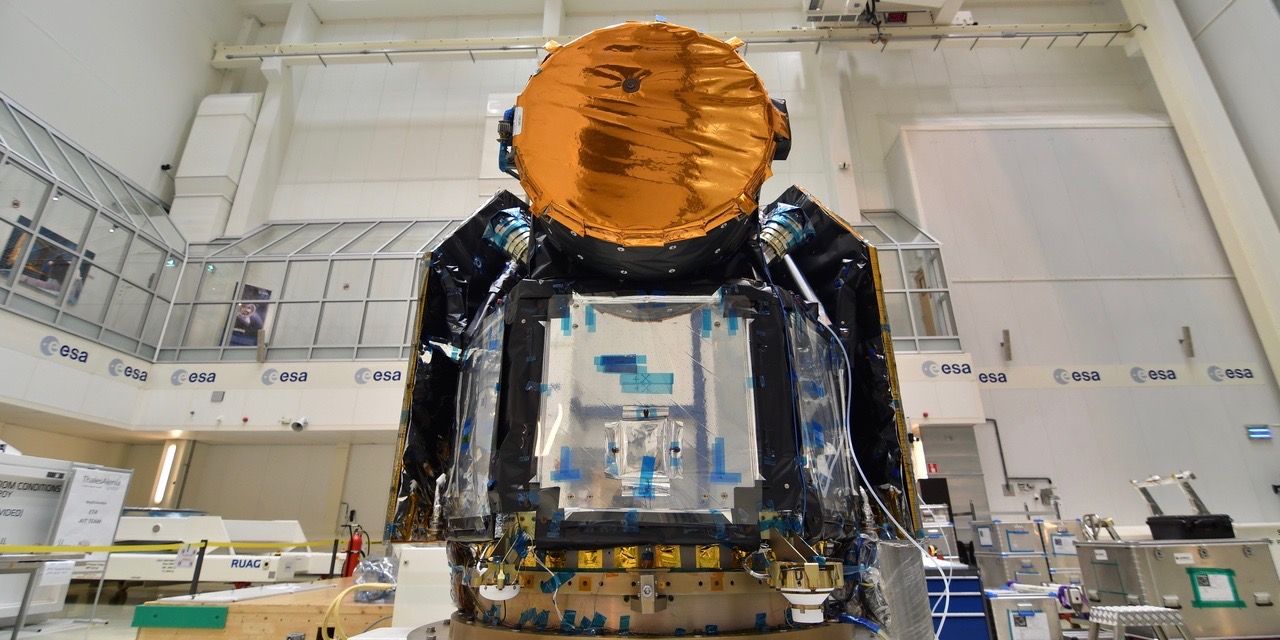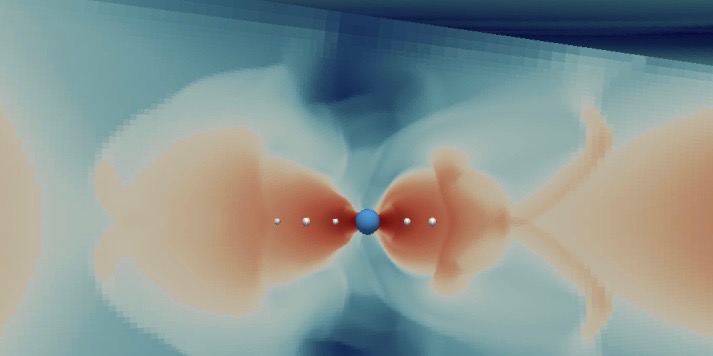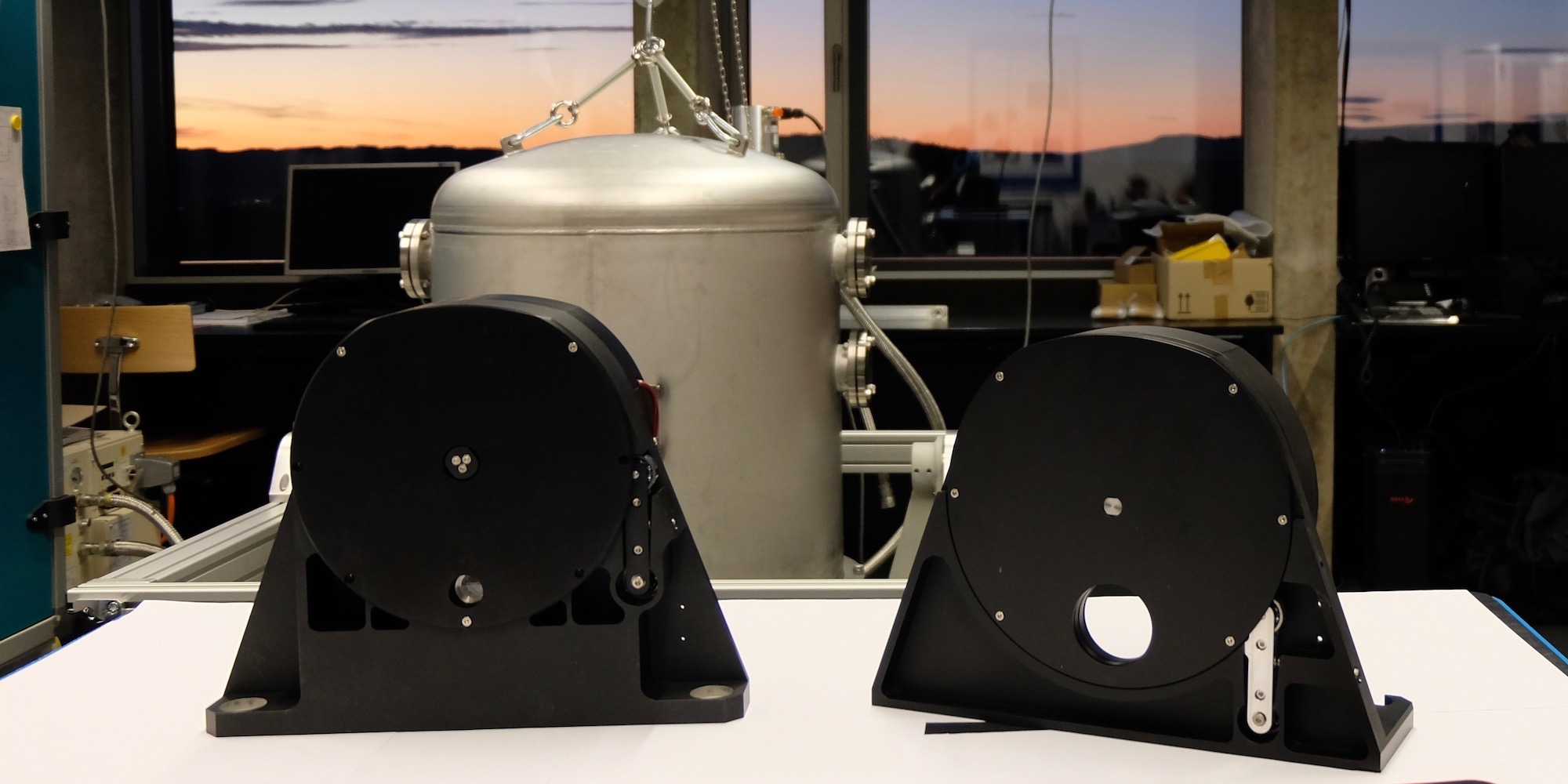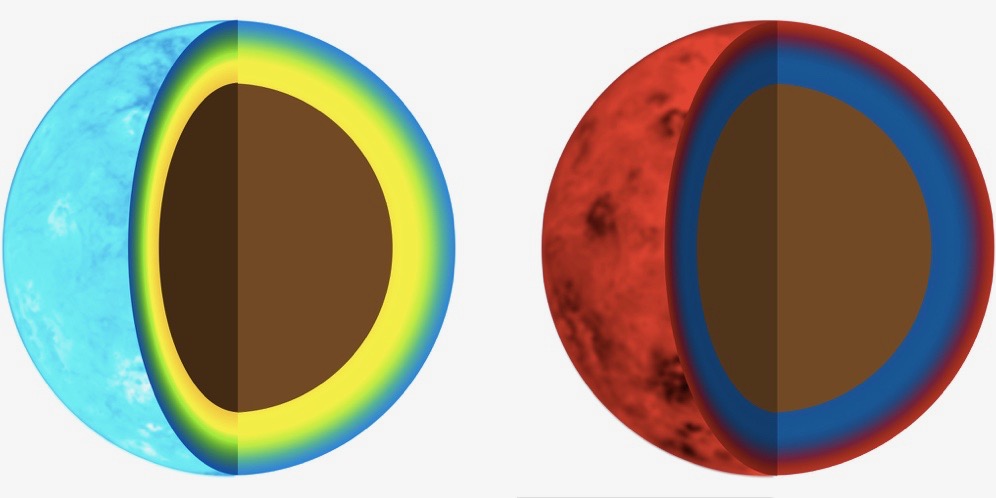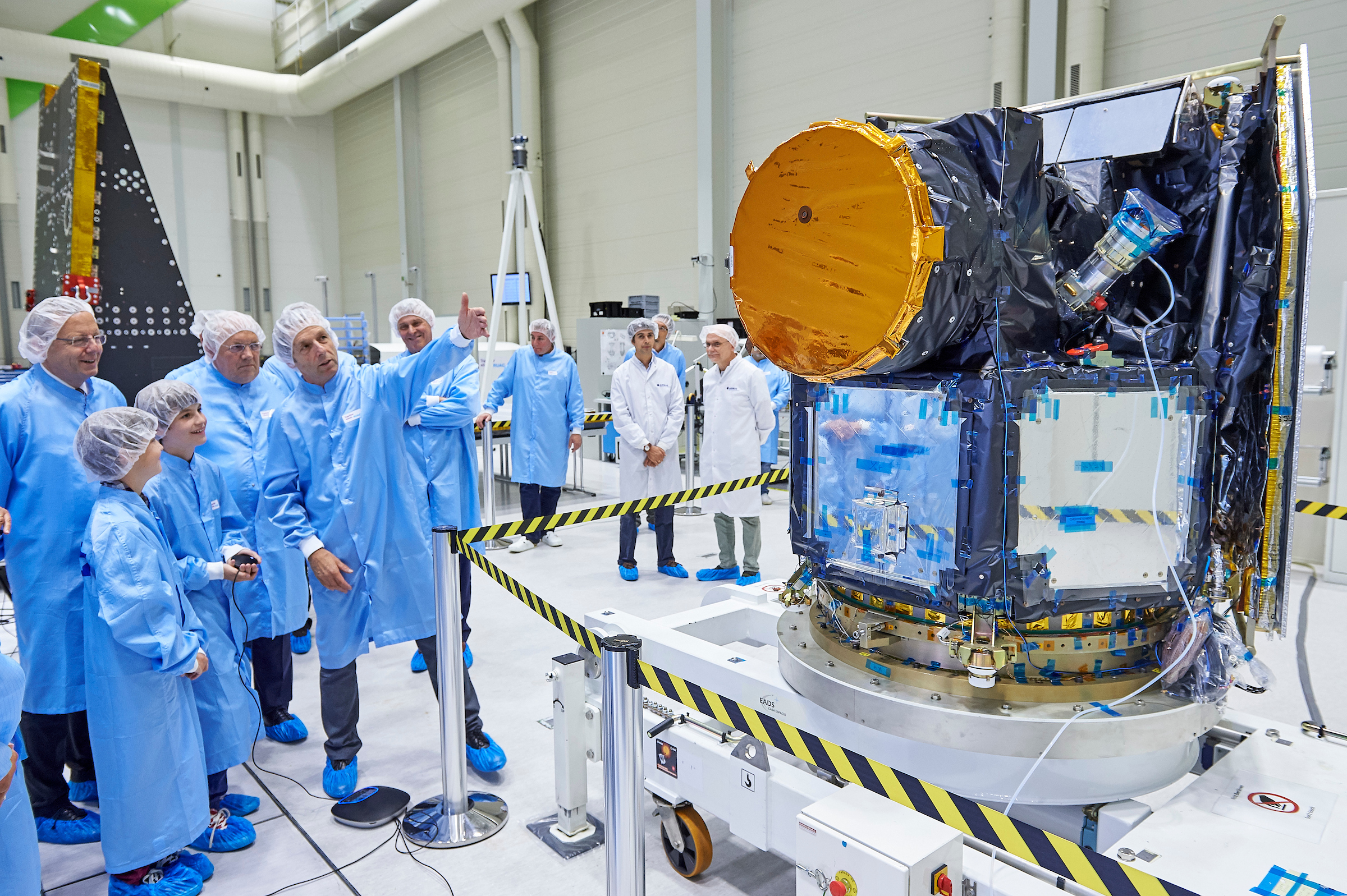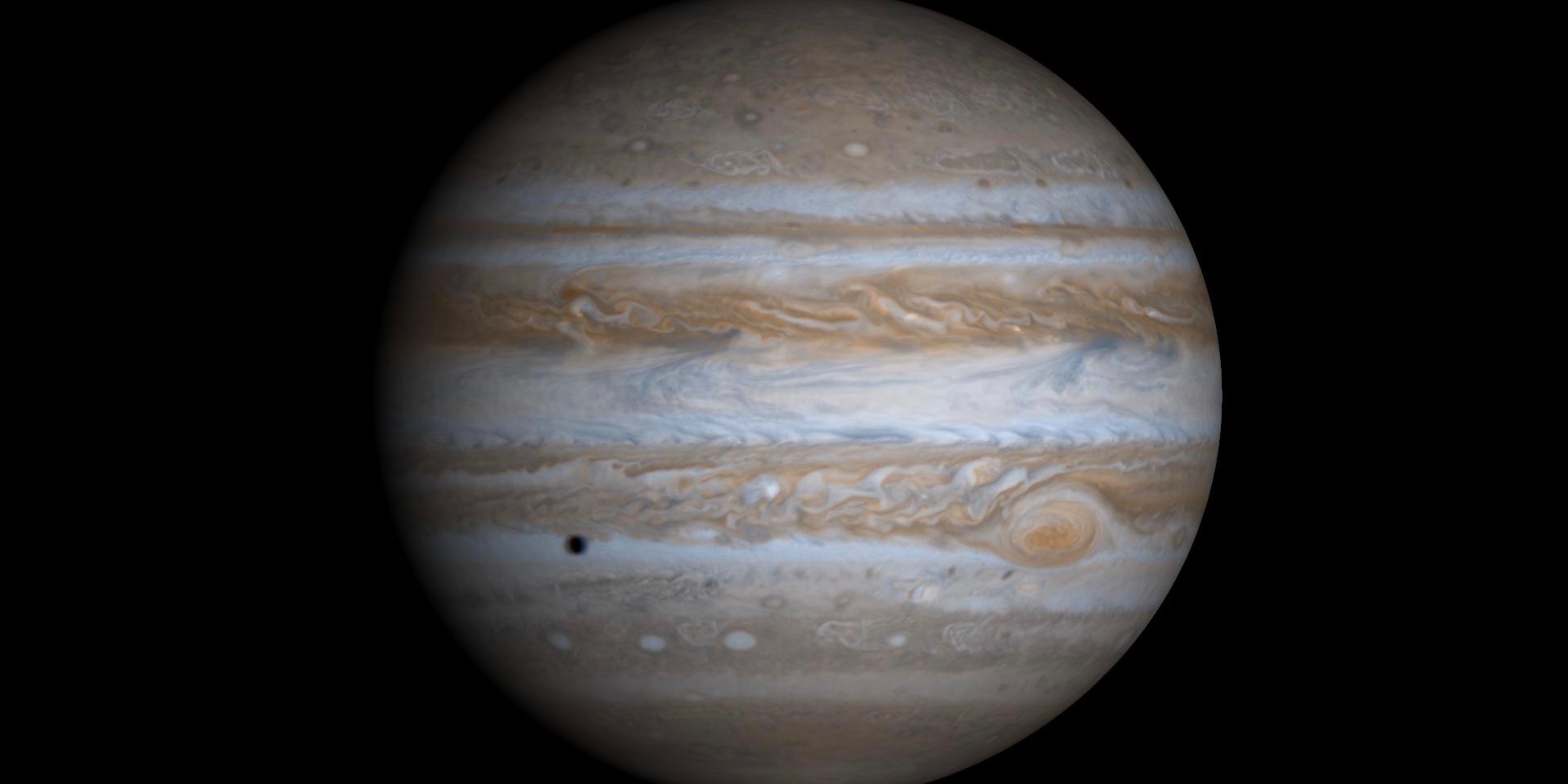Uncategorized
Better to dry a rocky planet before use
Earth’s solid surface and clement climate may be in part due to a massive star in the birth environment of the Sun. Without its radioactive elements injected into the early solar system, our home planet could be a hostile ocean world covered in global ice sheets. This is the result of computer simulations of planet […]
Continue ReadingThe shrinking planet
“But where did the hot Neptunes go?” This is the question astronomers have been asking for a long time, faced with the mysterious absence of planets the size of Neptunes very close to their star. A team of researchers, led by astronomers from the University of Geneva, has just discovered that one of these planets […]
Continue ReadingSpotting Protoplanet Collision Afterglows
Planets start out with a bang. During the last stage of planet formation, planetary embryos collide with other protoplanets, causing their surfaces and mantles to extensively melt. Will it be possible to directly image such molten protoplanets with future telescopes? This is the question that was addressed by a team of young PlanetS researchers. Irene […]
Continue ReadingMilestone for SAINT-EX project
SAINT-EX is a 1 meter robotic telescope under construction at the National Astronomical Observatory of Mexico in San Pedro Martir. It is designed to look for earth-sized, potentially habitable planets orbiting ultra-cool stars. The telescope being built by the ASTELCO company is funded by the Center for Space and Habitability CSH at the University of […]
Continue ReadingCHEOPS launch slot announced
The CHaracterising ExOPlanet Satellite, CHEOPS, will target 15 October to 14 November 2019 for launch as the European Space Agency ESA announced on 23 November 2018. CHEOPS will lift off on a Soyuz rocket operated by Arianespace from Europe’s spaceport in Kourou, sharing the ride into space with a satellite that is part of the […]
Continue ReadingEncouraging prospects for moon hunters
Astrophysicists of the University of Zürich, ETH Zürich and the NCCR PlanetS show how the icy moons of Uranus were born. Their result suggests that such potentially habitable worlds are much more abundant in the Universe than previously thought. The unprecedentedly complex computer simulations were performed at the Swiss National Supercomputing Centre (CSCS) in Lugano. […]
Continue ReadingTwo wheels for a new instrument
The Laboratory for Astronomical Instrumentation at ETH Zürich has shipped its first cryogenic wheels that were developed for the new infrared instrument ERIS on the ESO Very Large Telescope. These mechanisms will hold various filters and masks that provide unique capabilities for direct imaging and characterization of exoplanets. The Laboratory for Astronomical Instrumentation (part of […]
Continue ReadingThe Stuff that Planets Are Made of
Researchers of the NCCR PlanetS at the University of Zürich have analyzed the composition and structure of far-away exoplanets using statistical tools. Their analysis indicates whether a planet is earth-like, made up of pure rock or a water-world. The larger the planet, the more hydrogen and helium surround it. Is there a second Earth out […]
Continue Reading“Switzerland is a space nation!”
The research satellite CHEOPS was developed jointly by the University of Bern and the European Space Agency ESA. At an event at RUAG in Zurich on 27 August 2018, representatives of the institutions involved in its construction visited the satellite. Among the speakers and guests were Federal Councillor Johann Schneider-Ammann, Jan Wörner, Director General of […]
Continue ReadingJupiter had growth disorders
Researchers of the Universities of Bern and Zürich and of ETH Zürich show how Jupiter was formed. Data collected from meteorites had indicated that the growth of the giant planet had been delayed for two million years. Now the researchers have found an explanation: Collisions with kilometer-sized blocks generated high energy, which meant that in […]
Continue Reading
